Yanchao Jiang
Polynomial Closed Form Model for Ultra-Wideband Transmission Systems
Aug 29, 2025Abstract:Ultrafast and accurate physical layer models are essential for designing, optimizing and managing ultra-wideband optical transmission systems. We present a closed-form GN/EGN model, named Polynomial Closed-Form Model (PCFM), improving reliability, accuracy, and generality. The key to deriving PCFM is expressing the spatial power profile of each channel along a span as a polynomial. Then, under reasonable approximations, the integral calculation can be carried out analytically, for any chosen degree of the polynomial. We present a full detailed derivation of the model. We then validate it vs. the numerically integrated GN-model in a challenging multiband (C+L+S) scenario, including Raman amplification and inter-channel Raman scattering. We then show that the approach works well also in the special case of the presence of multiple lumped loss along the fiber. Overall, the approach shows very good accuracy and broad applicability. A software implementing the model, fully reconfigurable to any type of system layout, is available for download under the Creative Commons 4.0 License.
Signal and Backward Raman Pump Power Optimization in Multi-Band Systems Using Fast Power Profile Estimation
Apr 08, 2025Abstract:This paper presents an efficient numerical method for calculating spatial power profiles of both signal and pump with significant Interchannel Stimulated Raman Scattering (ISRS) and backward Raman amplification in multiband systems. This method was evaluated in the optimization of a C+L+S/C+L+S+E 1000km link, employing three backward Raman pumps, by means of a closed-form EGN model (CFM6). The results show a 100x computational speed increase, enabling deep optimization which made it possible to obtain very good overall system performance and flat GSNR.
Recent Advances in Real-Time Models for UWB Transmission Systems
Apr 04, 2025Abstract:Ultrafast accurate physical layer models are essential for designing, optimizing and managing ultrawideband optical transmission systems. We present a closed-form GN/EGN model based on a recent analytical breakthrough, improving reliability, accuracy and generality.
An Algorithm to Speed up the Spatial Power Profile Calculation in Backward Raman Amplified Systems
Nov 19, 2024Abstract:As data transmission demands grow, long-haul optical transmission links face increasing pressure to increase their throughput. Expanding usable bandwidth through Ultra-Wide Band (UWB) systems has become the primary strategy for increasing transmission capacity. However, UWB systems present challenges, such as the reliance on backward Raman amplification and the complications posed by inter-channel stimulated Raman scattering (ISRS), which causes uneven signal propagation across bands. To address these issues, accurate and efficient physical models are required for real-time optimization, which rely on the knowledge of the power profile. This paper develops a novel, more efficient method for computing the power profile of signals and pumps, utilizing the integral form of the equations with matrix-based approximations. The algorithm achieves up to a thirty-fold average speed increase over conventional approaches while maintaining an error margin under 0.05 dBm. These results represent a significant step forward towards reducing optimization times and enabling more extensive studies in ultra-wide band long haul optical transmission, further facilitating research and commercialization of UWB systems, in an effort to address the growing demand for higher throughput.
Launch Power Optimization in super-(C+L) Systems
Jul 19, 2024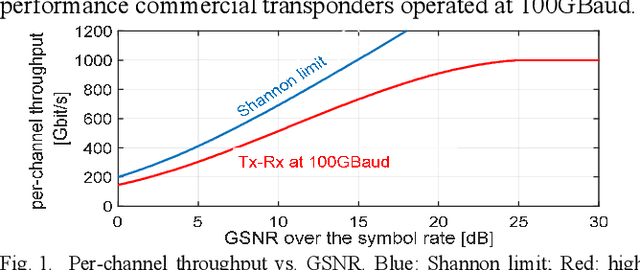
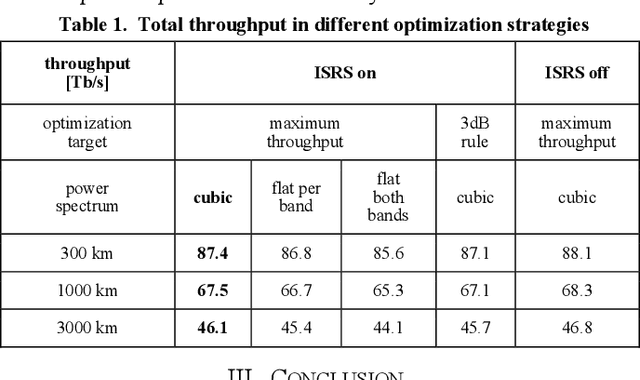
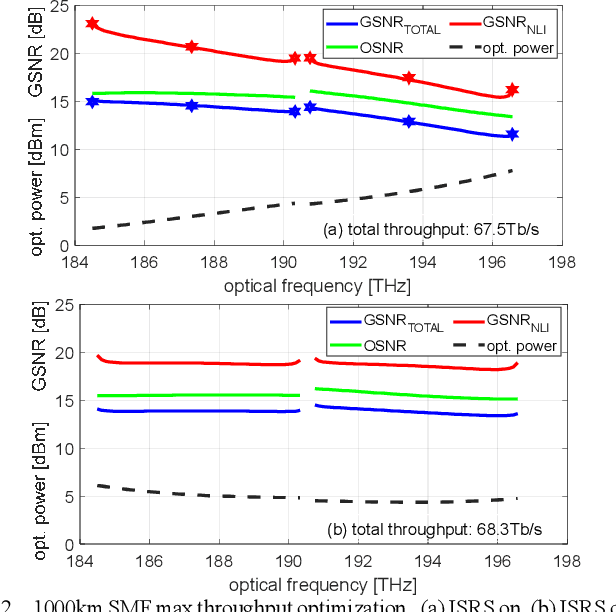
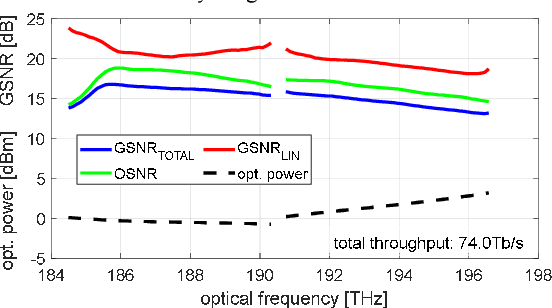
Abstract:We investigate launch power optimization in 12-THz super-(C+L) systems, using iterative performance evaluation enabled by NLI closed-form models. We find that, despite the strong ISRS, these systems tolerate well easy-to-implement suboptimal launch power profiles, with marginal throughput loss.
Optimum Launch Power in Multiband Systems
Jul 11, 2024


Abstract:We investigate the residual throughput penalty due to ISRS, after power-optimization, in multiband systems. We show it to be mild. We also revisit the launch power optimization 3-dB rule. We find that using it is possible but not advisable due to increased GSNR non-uniformity.
Closed-Form EGN Model with Comprehensive Raman Support
Jul 10, 2024



Abstract:We present a series of experiments testing the accuracy of a new closed-form multiband EGN model, carried out over a full-Raman 9-span C+L link. Transmission regimes ranged from linear to strongly non-linear with large ISRS. We found good correspondence between predicted and measured performance.
CFM6, a closed-form NLI EGN model supporting multiband transmission with arbitrary Raman amplification
May 14, 2024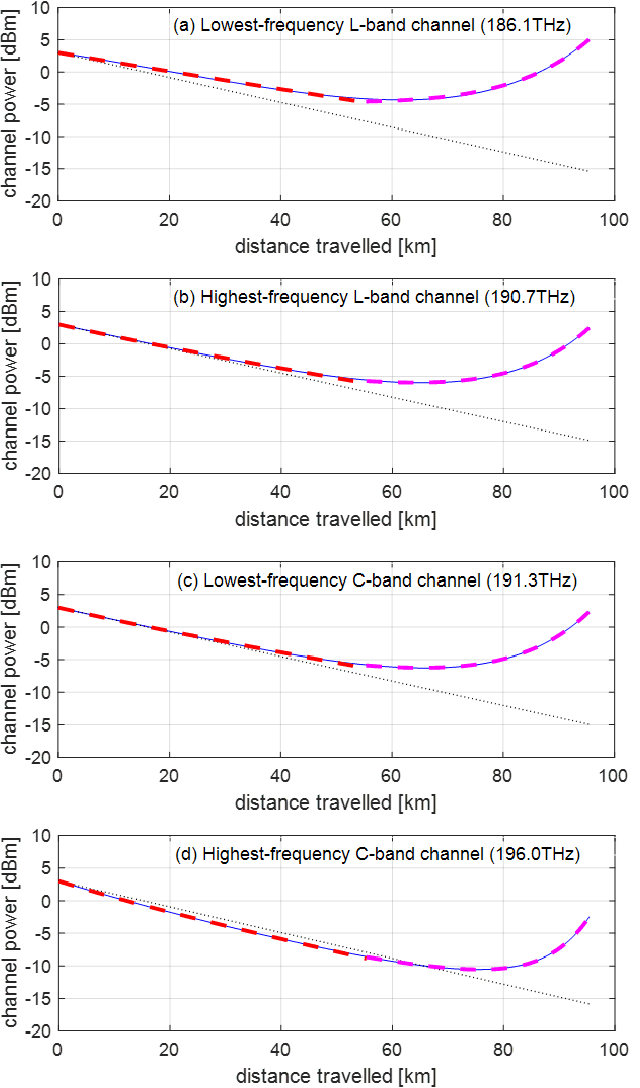
Abstract:We formulated a closed-form EGN model for nonlinear interference in ultra-wideband optical systems with arbitrary Raman amplification. This model enhanced the CISCO-POLITO-CFM5 performance by introducing a novel contribution attributed to the backward Raman amplification. It can handle the frequency-dependent fiber parameters and inter-channel stimulated Raman scattering.
 Add to Chrome
Add to Chrome Add to Firefox
Add to Firefox Add to Edge
Add to Edge